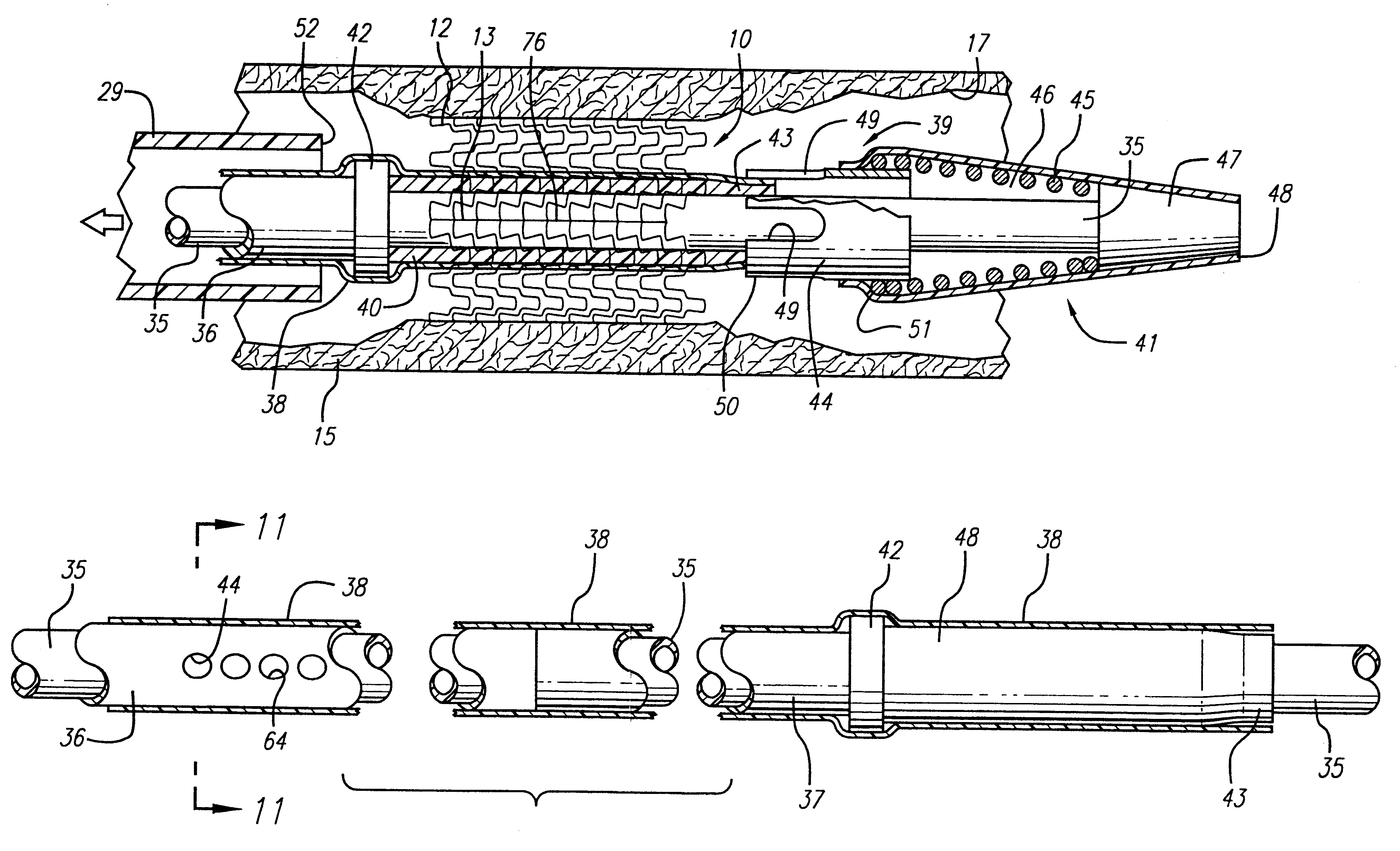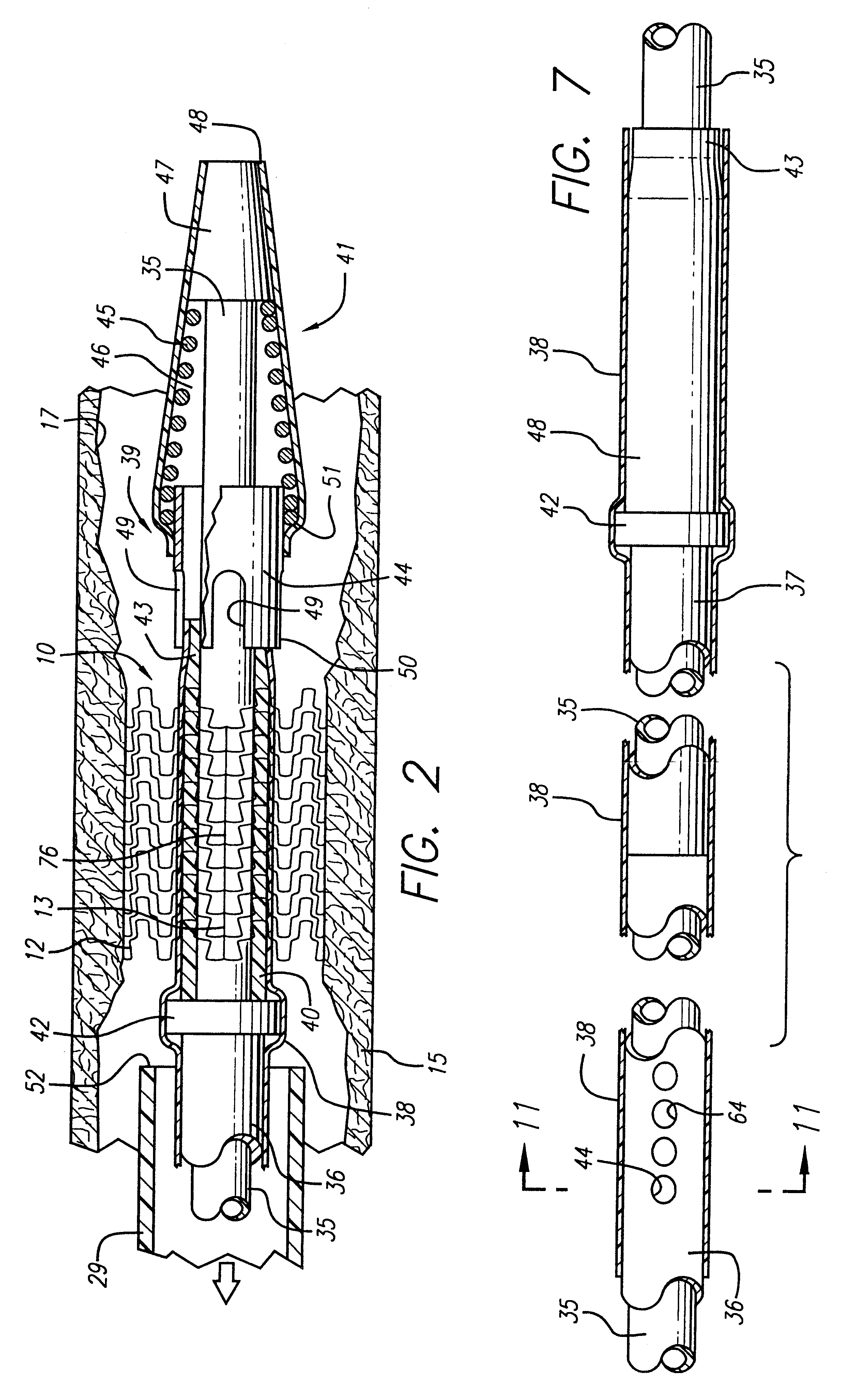Self-expanding stent with enhanced delivery precision and stent delivery system
a self-expanding, precision-enhancing technology, applied in the field of expandable endoprosthesis devices, can solve the problems of prior art delivery systems, inaccurate positioning, perforation of the vessel wall, etc., and achieve the effects of facilitating delivery, preventing longitudinal shortening of the stent during expansion, and accurate placemen
- Summary
- Abstract
- Description
- Claims
- Application Information
AI Technical Summary
Benefits of technology
Problems solved by technology
Method used
Image
Examples
Embodiment Construction
The present invention is directed to a self-expanding stent with enhanced delivery precision and a stent delivery system for accurately placing self-expanding stents into a target site in a body lumen. While the present invention is described in detail as applied to the coronary arteries of a patient, those skilled in the art will appreciate it that it can also be used in other body lumens as well, peripheral arteries such as the carotid artery, and veins.
FIGS. 1-4 illustrate a self-expanding stent 10 incorporating features of the present invention. The stent 10 is mounted onto a stent delivery system 11 which is also made in accordance with the present invention. The stent 10 generally comprises a plurality of radially expandable cylindrical elements 12 disposed generally coaxially and connected by interconnecting members 13 disposed between adjacent cylindrical elements 12. Additional details regarding the particular structure and shape of the various elements making up the stent ...
PUM
 Login to View More
Login to View More Abstract
Description
Claims
Application Information
 Login to View More
Login to View More - R&D
- Intellectual Property
- Life Sciences
- Materials
- Tech Scout
- Unparalleled Data Quality
- Higher Quality Content
- 60% Fewer Hallucinations
Browse by: Latest US Patents, China's latest patents, Technical Efficacy Thesaurus, Application Domain, Technology Topic, Popular Technical Reports.
© 2025 PatSnap. All rights reserved.Legal|Privacy policy|Modern Slavery Act Transparency Statement|Sitemap|About US| Contact US: help@patsnap.com



